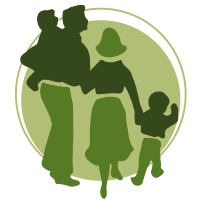Our feet, knees and hips are in constant demand throughout the day and often under pressure. Chiropractors are trained to look at how the hips, knees and feet affect – and are affected by – the rest of your body, especially your spine.
Ankles
Local Chiropractors from Luck’s Yard Clinic say: ‘’Most of us will have twisted an ankle at some stage of our lives. The most common injury to the ankle, the ‘common ankle sprain’, is usually caused by turning it in, such as when wearing high heels, or turning it over by stepping on a stone or the edge of a kerb. Only occasionally, the end of the bone on the outside of the ankle breaks. More often, however, it is the ligaments of the ankle on the front and side that tear and produce swelling and bruising.”
It usually takes between four and six weeks to recover from the immediate injury but sometimes the joints and ligaments of the foot do not fully recover. This can cause problems to recur in the ankle or other areas to be put under strain. The ankle, or other joints in the foot, may remain restricted, or the ligaments may not repair satisfactorily on their own. Also, as the injury may have healed poorly, it is common to roll the ankle and sprain it again after the initial injury.
Knees
The knee is the largest joint in the body and as such has a few unique features to allow it to do its job: It relies on strong ligaments to keep the two bones together and has two sickle-shaped pieces of cartilage to allow the bones to fit well against each other.
Bending and twisting actions often caused by skiing or football injuries can damage the ligaments and cartilages of the knee joint. With age, the joint both at the kneecap and at the main joint can be prone to wear and tear leading to osteoarthritis.
Hips
Arthritis is the most common hip problem. Early signs include stiffness in the groin and often sharp pain on some movements. Strangely, early arthritis of the hip often causes pain in the knee and either of these symptoms can exist for years and not be recognised as the early signs of arthritis.
Feet
Pronation is the term used to describe the rotation of the foot so that the inner edge of the sole bears the body’s weight. It is a normal and important event in the walking pattern, enabling the foot to work as a shock absorber for the body. However, over-pronation (excessive rotation) can cause problems in the feet such as flat feet, bunions and widening of the forefoot. Knee, hip or back pain may also be caused purely by over-pronation in the feet.
It is therefore important to recognise the condition and your chiropractor will be able to advise on the correct shoes to wear and on exercises, which will help to strengthen your feet. Sometimes insoles or ‘orthotics’ are needed to support the feet and protect the structures above.
Prevention is better than cure
Before exercise ensure that your body is ‘warmed up’ and you add some simple stretching exercises to your routine.
Try the Luck’s Yard app: search for lucksyardclinic from your app provider.
For more advice call our friendly Reception Team on 01483 527 945



